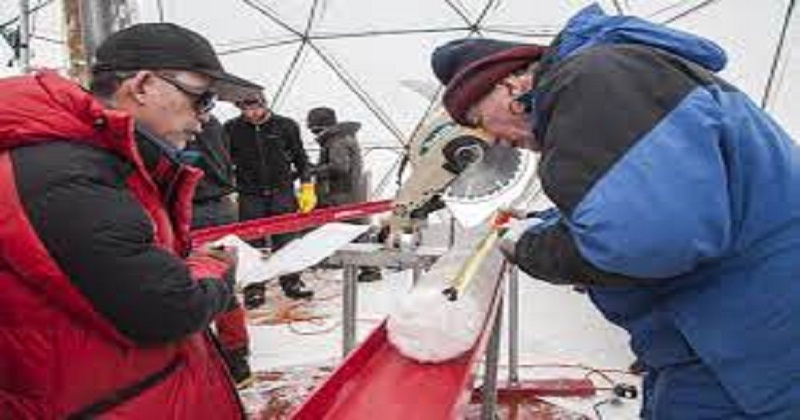
Researchers found viruses nearly 15,000 years old in ice samples taken from the Tibetan Plateau in China. These viruses, which survived because they were frozen, are unlike any other viruses that have been cataloged so far. In a study published in Microbiome, researchers explored how viruses have evolved over the centuries. Scientists also developed a new, ultra-clean method to analyze microbes and viruses in ice without contaminating it.

‘Glaciers formed slowly, and along with dust and gases many, many viruses were also deposited in that ice,’ said lead author Zhi-Ping Zhong, a microbiologist at The Ohio State University’s Byrd Polar and Climate Research Centre. Zhong said, ‘The glaciers in western China are not well-studied, and our goal is to use this information to reflect past environments. Viruses are a component of those environments’.
Ice cores from the Guliya ice cap in western China were analyzed in 2015. These cores are collected at high altitudes- the summit of Guliya, where this ice originated, sits at 22,000 feet above sea level. Researchers found 33 virus genes in the ice after analyzing it. Scientists have already identified four of these viruses. 28 of them, however, are novel. Half of them survived because of the ice, and not despite it.
Read more: ‘Sweet diplomacy’: India and Pakistan exchange sweets to mark Eid al-Adha
Professor of microbiology at Ohio State Matthew Sullivan said, ‘These are viruses that would have thrived in extreme environments. These viruses have signature genes that help them infect cells in cold environments, just surreal genetic signatures for how a virus could survive under extreme conditions’.
Four of the viruses in the Guliya ice cap cores had previously been identified and belonged to virus families that typically infect bacteria. Viruses were found in concentrations much lower than those found in oceans or soil. According to both the environment and known virus databases, the viruses likely originated from soil or plants, not from animals or humans.

Post Your Comments